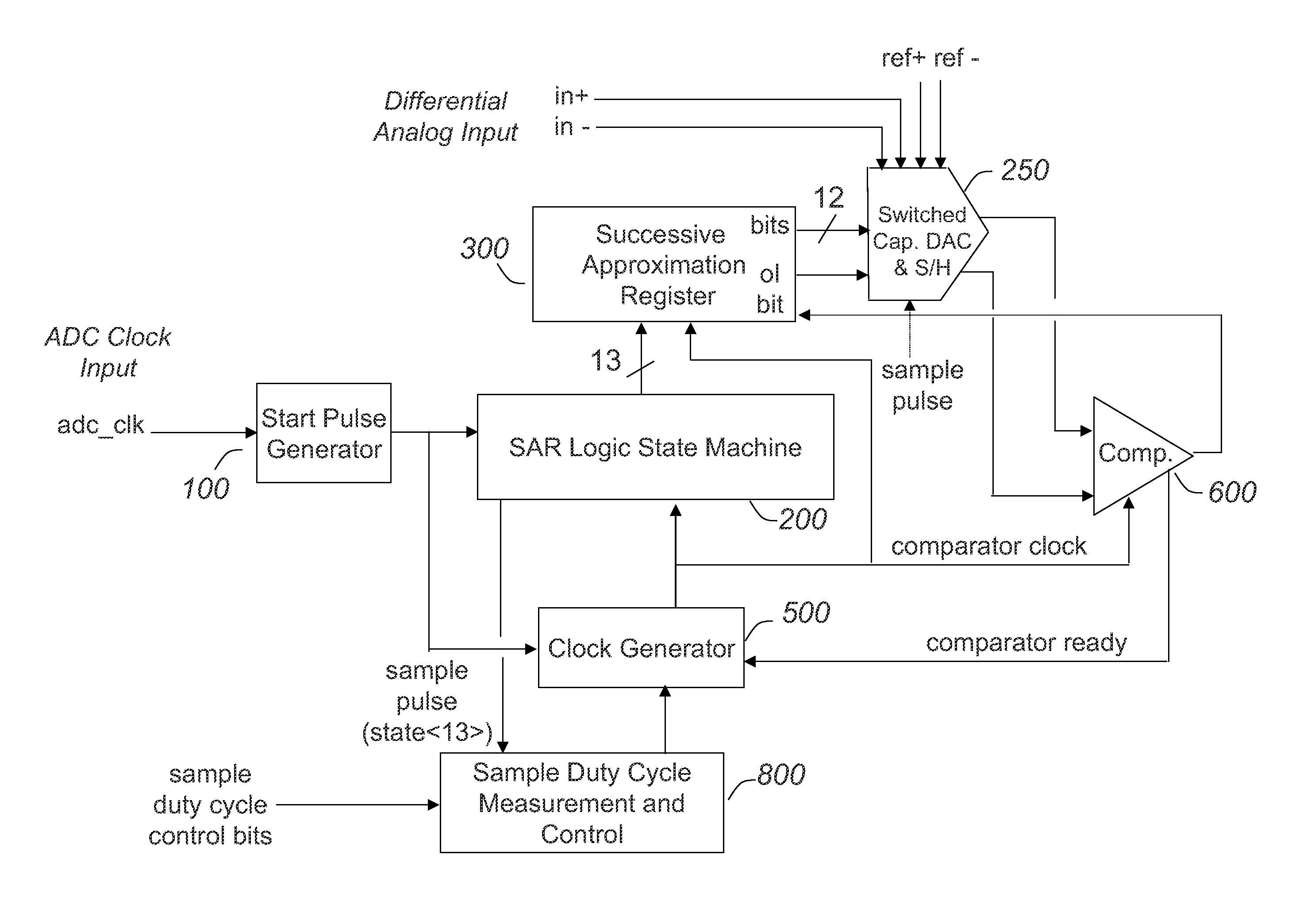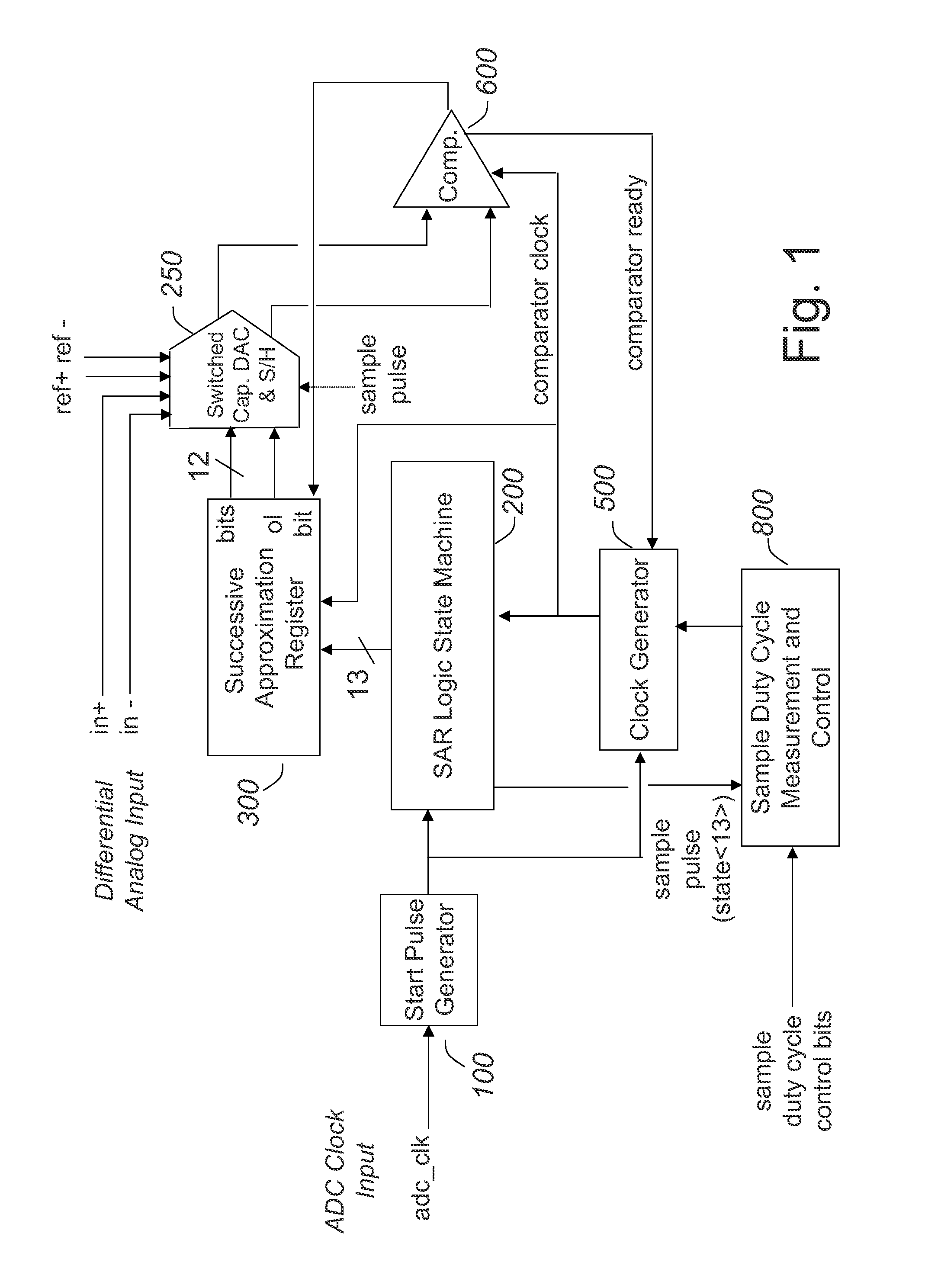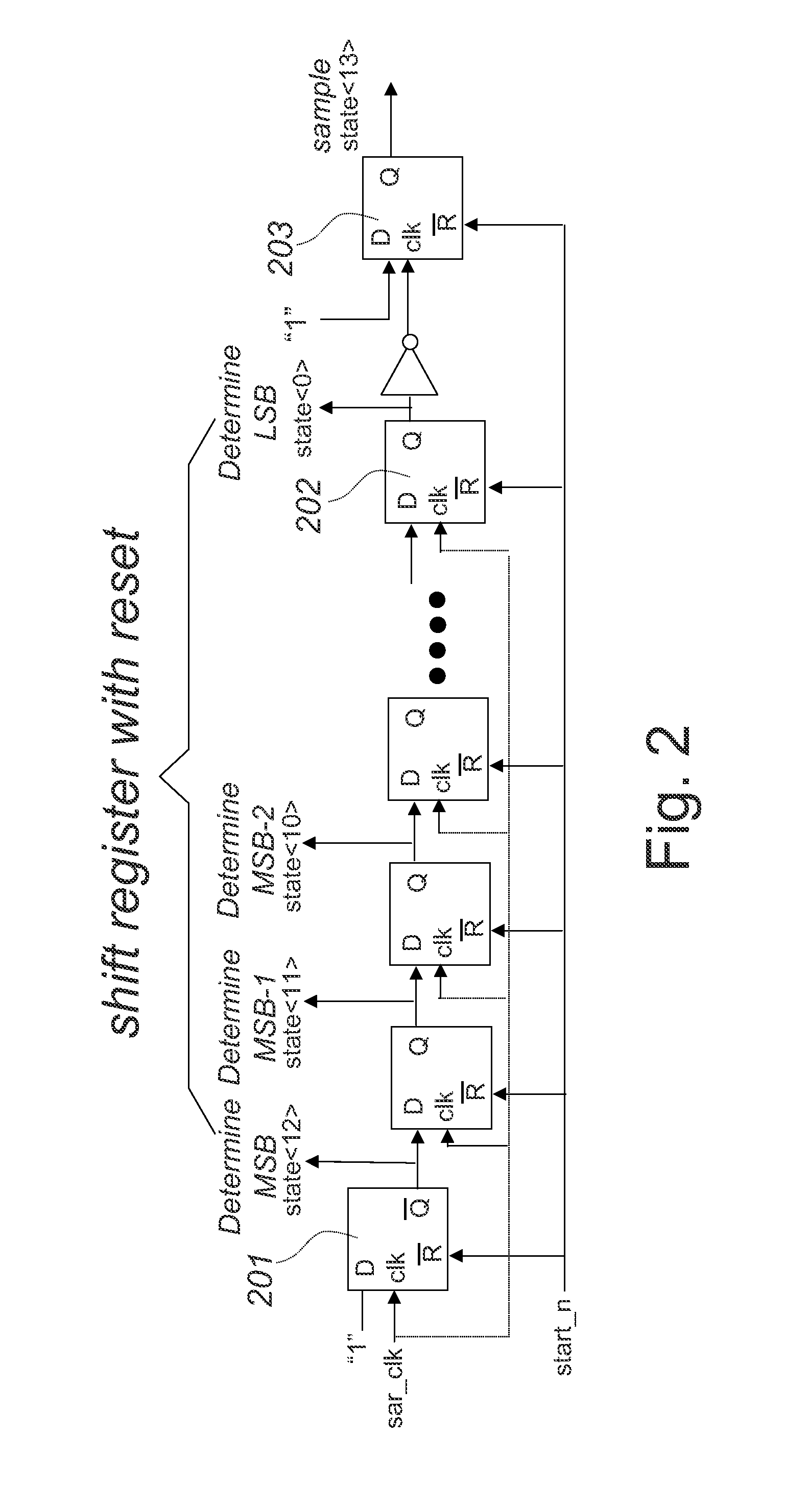System and method for adaptive timing control of successive approximation analog-to-digital conversion
a technology of successive approximation and adaptive timing control, applied in the field of system and method for timing generation in successive approximation register (sar) analog-to-digital conversion, can solve the problems of insufficient allocation of available sar processing cycle time, and failure of optimization timing to ensure adequate tim
- Summary
- Abstract
- Description
- Claims
- Application Information
AI Technical Summary
Benefits of technology
Problems solved by technology
Method used
Image
Examples
Embodiment Construction
[0024]Referring now to FIG. 1, there is shown a system 10 formed in accordance with an exemplary embodiment of the present invention. System 10 generally provides a successive approximation register (SAR) analog-to-digital converter (ADC) with adaptive timing generation. SAR ADC processing is effectively carried out by a system 10 which includes a SAR logic state machine unit 200, successive approximation register (SA Register) unit 300, reference digital-to-analog DAC converter & sample / hold (S / H) unit 250, and comparator unit 600 preferably inter-coupled as shown. Although separately shown, the successive approximation register of unit 300 may be formed as part of SAR logic state machine unit 200.
Timed SAR ADC
[0025]As mentioned, an SAR ADC processing cycle includes a sampling phase followed by a bit conversion phase. During the sampling phase, reference DAC & S / H unit 250 samples and holds (for the subsequent bit conversion phase) an analog input voltage VIN, which in the illustra...
PUM
 Login to View More
Login to View More Abstract
Description
Claims
Application Information
 Login to View More
Login to View More - R&D
- Intellectual Property
- Life Sciences
- Materials
- Tech Scout
- Unparalleled Data Quality
- Higher Quality Content
- 60% Fewer Hallucinations
Browse by: Latest US Patents, China's latest patents, Technical Efficacy Thesaurus, Application Domain, Technology Topic, Popular Technical Reports.
© 2025 PatSnap. All rights reserved.Legal|Privacy policy|Modern Slavery Act Transparency Statement|Sitemap|About US| Contact US: help@patsnap.com



